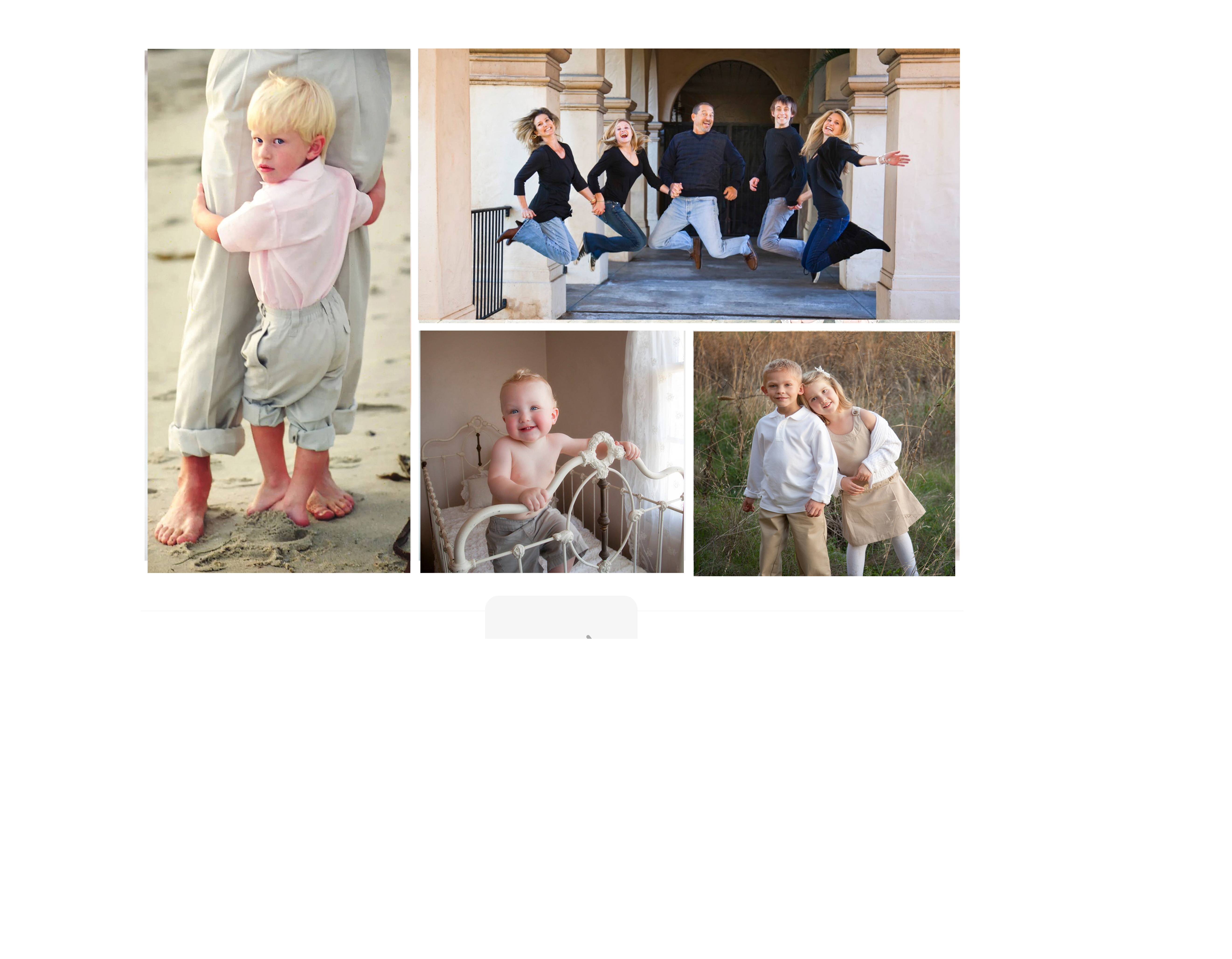“It’s Good Enough”…Revisited
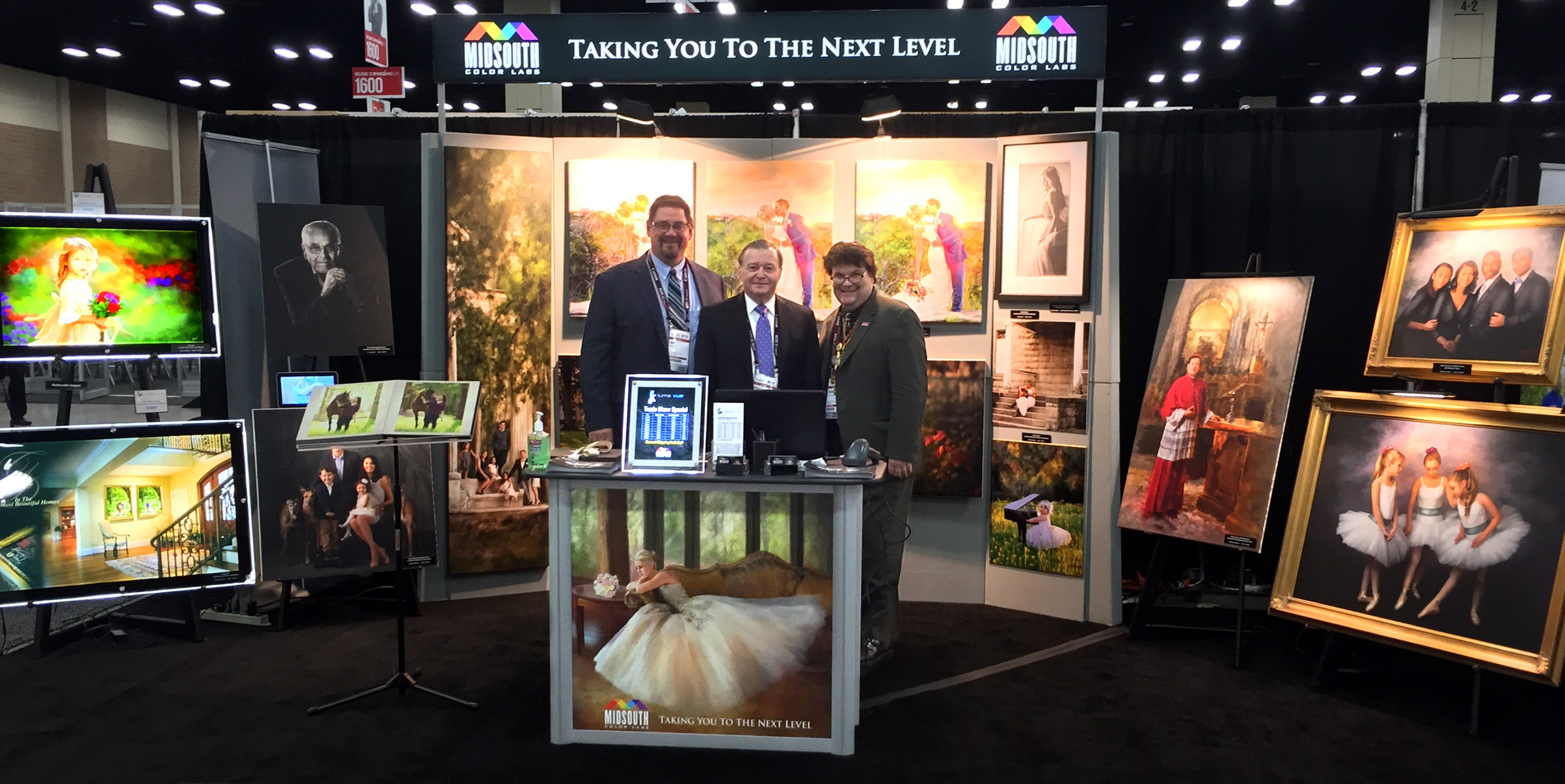
Dirk Witt, Brooks Clayton and Rick Trummer at Imaging USA, San Antonio, TX
Here are some thoughts from Brooks Clayton, president of Mid-South Color Labs, Inc.
Back in the Fall of 1999, I wrote an article for the Tennessee PPA magazine entitled, “It’s Good Enough”. That was during the time of transition from film to digital. In that article, I cautioned against the wave of portrait and commercial photographers and their clients who were accepting quality that they would not have accepted a year earlier by saying “it’s good enough”.
In that article, I said: “Our focus must continue to be on the customer and producing the best quality we can.”
I was also bold enough to say: “The real danger here is that unless we continue to differentiate our work from discounters or mass-marketers, we unwittingly become part of a downward spiral of quality and then pricing and finally go out of business”.
Well, fast forward almost 20 years and we see that many photographers (and labs) have indeed gone out of business. Some just gave up and others struggled to survive but ultimately didn’t.
Many of those photographers who made it and the new ones who have decided to make this their profession have come to the realization that if they are to prosper, they have to step up their game. They see that the market once again supports quality… when quality and creativity are presented to them.
Notice that I said: “when presented to them”.
We talk with clients daily who tell us that they know they have to go to the next level by offering more creativity, quality and wall portraits. They realize that they can’t be successful by selling only digital files or small prints. They have to offer products and services that set themselves apart from the crowd. Yes, they have to differentiate themselves.
And for those who have tried it, it is working. Today, we produce more and larger wall portraits than we have ever produced. Products that speak quality and creativity like stripped canvas prints, Gićlee prints and Painter portraits, complete with contour brush strokes and oil colors are selling like never before.
In all fairness, I must say that I know of many photographers who were in business in 1999 and continued to produce quality images and prints, in spite of the temptation to follow the trend. They hardly felt the tougher economic times because they continued to market themselves.
So, what is the take-away here?
If you really want to be successful:
- Create images that show you are a creative professional.
- Make your product offering different than your competitor.
- Display and offer large and non-standard size wall portraits.
- And perhaps the most important, sharpen your selling skills so that you can truly convey the value of your work in a way that touches the heart and soul of your client. Not high-pressure, but high-touch.
- Tell stories of just how important portraits are to you, personally, and to clients who have shared their stories with you. Stories are powerful!
As photographers, we often lose sight of what a gift and service we provide. Sadly, in the last two weeks, our lab has printed bereavement photographs of six teenagers who died way too early. Those photographs will be among the most treasured possessions of the remaining family members. Does any other profession come close in providing such comfort and support? It makes us proud of what we do.
In conclusion, “it’s good enough” really wasn’t in 1999 and it certainly isn’t now. There are great opportunities in our wonderful profession for those willing to stay focused.
“Lighting with an Accent”
By Gabriel I. Alonso M.Photog.,Cr. CPP
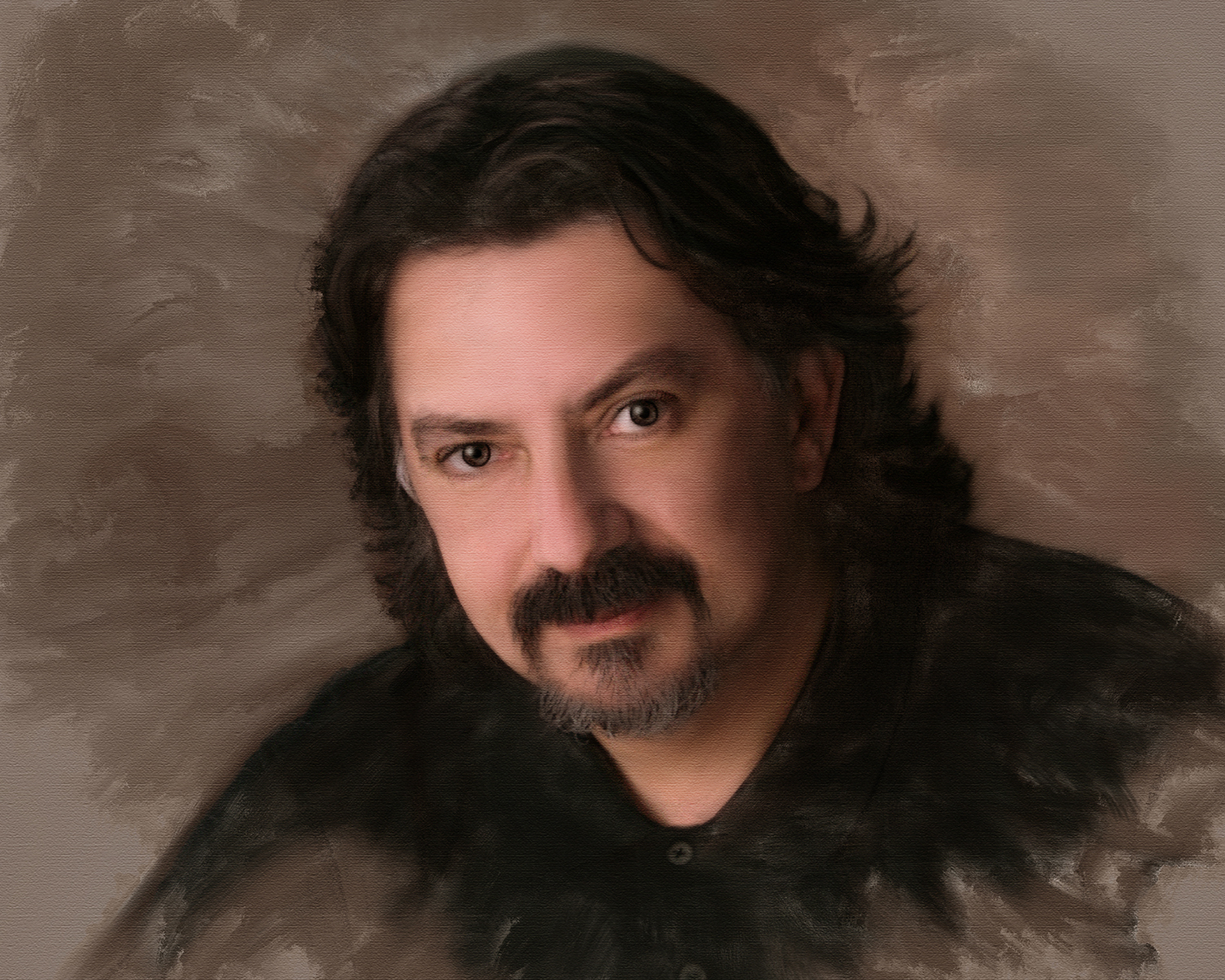 When I started to get serious about learning lighting techniques, there were never enough ways and lighting devices to incorporate into a lighting scheme. I would use every light available in the studio. It took a while to learn how they interact and to use them properly.
When I started to get serious about learning lighting techniques, there were never enough ways and lighting devices to incorporate into a lighting scheme. I would use every light available in the studio. It took a while to learn how they interact and to use them properly.
Later I went in the opposite direction, swept by a counter-current that took me into minimalism, favoring location environmental and outdoor assignments using available light with supplemental lighting as needed.
Having been at both ends of the spectrum and everywhere in between, now I find myself in control. When preparing for a session, I select the minimum amount of lighting equipment required to accomplish the goal. I would like to share with you some of the things that I have learned.
The Key and Fill lights are the foundation of every lighting scheme and are ever present. The Key light defines pattern and direction, whereas the Fill light provides basic density and controls contrast. The location of the Fill is preferably on the same side as the Key and close to the camera. When shooting on location or outdoors, available ambient light could be used as the Fill light.
Additional lights are Hair, Background and Accent. Let’s explore these secondary lights briefly. The hair light is one that should be used sparingly since it is very easy to overdo and in my opinion, unless you have someone with very dark hair, unnecessary.
The background type and how you want it to render will dictate whether to light it or not. The Background light will take care of separation without worries of spilling on the subject, except on high key schemes were care should be taken to prevent flare.
Enter my favorite light... The Accent or Kicker light. If I had to only use one type of secondary light, it would be a Kicker light. It serves as a means to deliver depth, bringing three-dimensionality to your portraiture.
Photography is a two dimensional medium. There‘s height and width only. The use of an Accent light delivers that needed third dimension and depth. In traditional portraiture, the proper use of a Kicker light is to position it on the same side as the key light.
Adding a second Kicker on the opposite side to the Key light is tricky but rewarding. It should be approached just like cooking with garlic: “A little bit goes a long way”. Please refer to the enclosed illustrations for examples of its use. Great depth and roundness can be achieved with the use of a Kicker.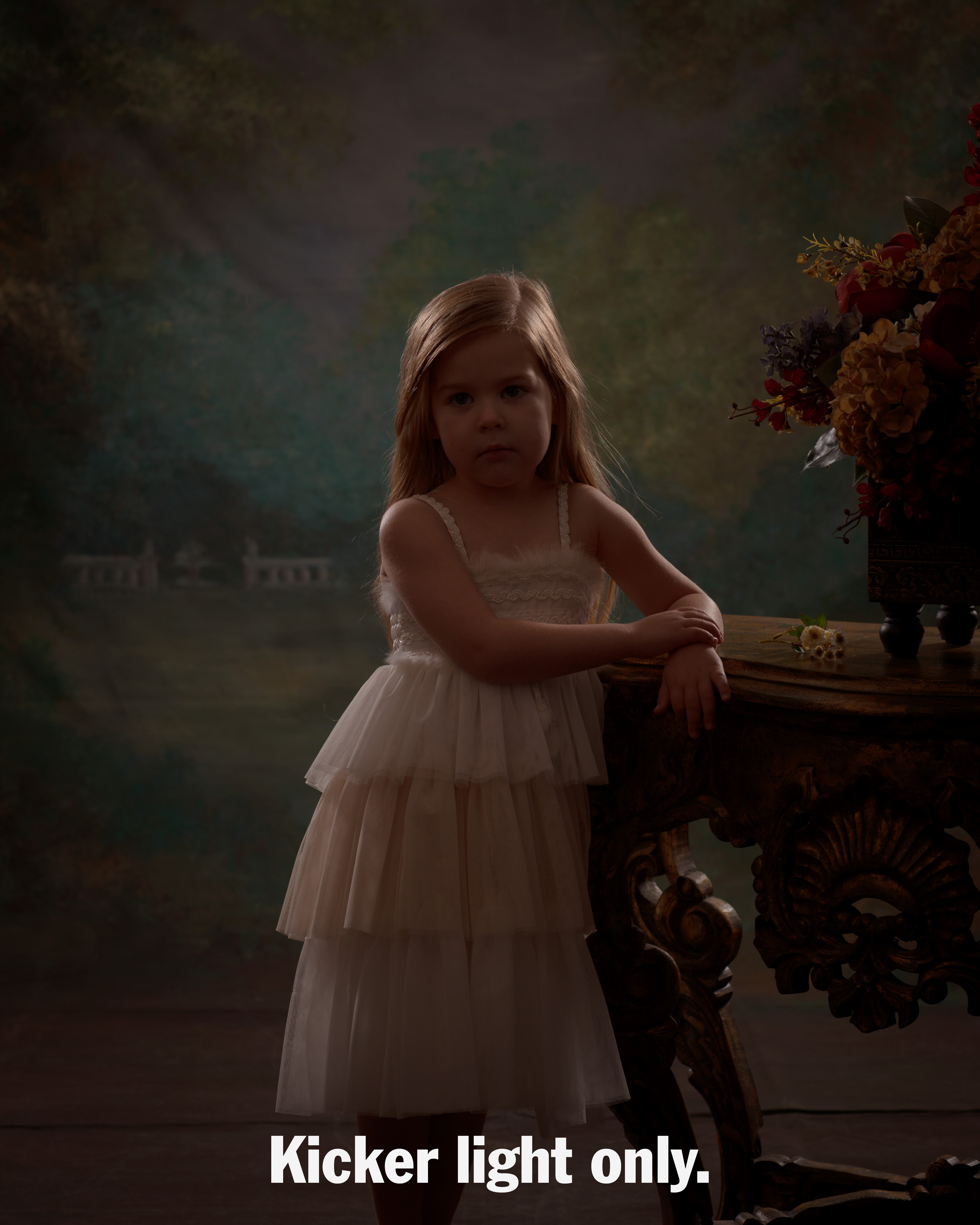
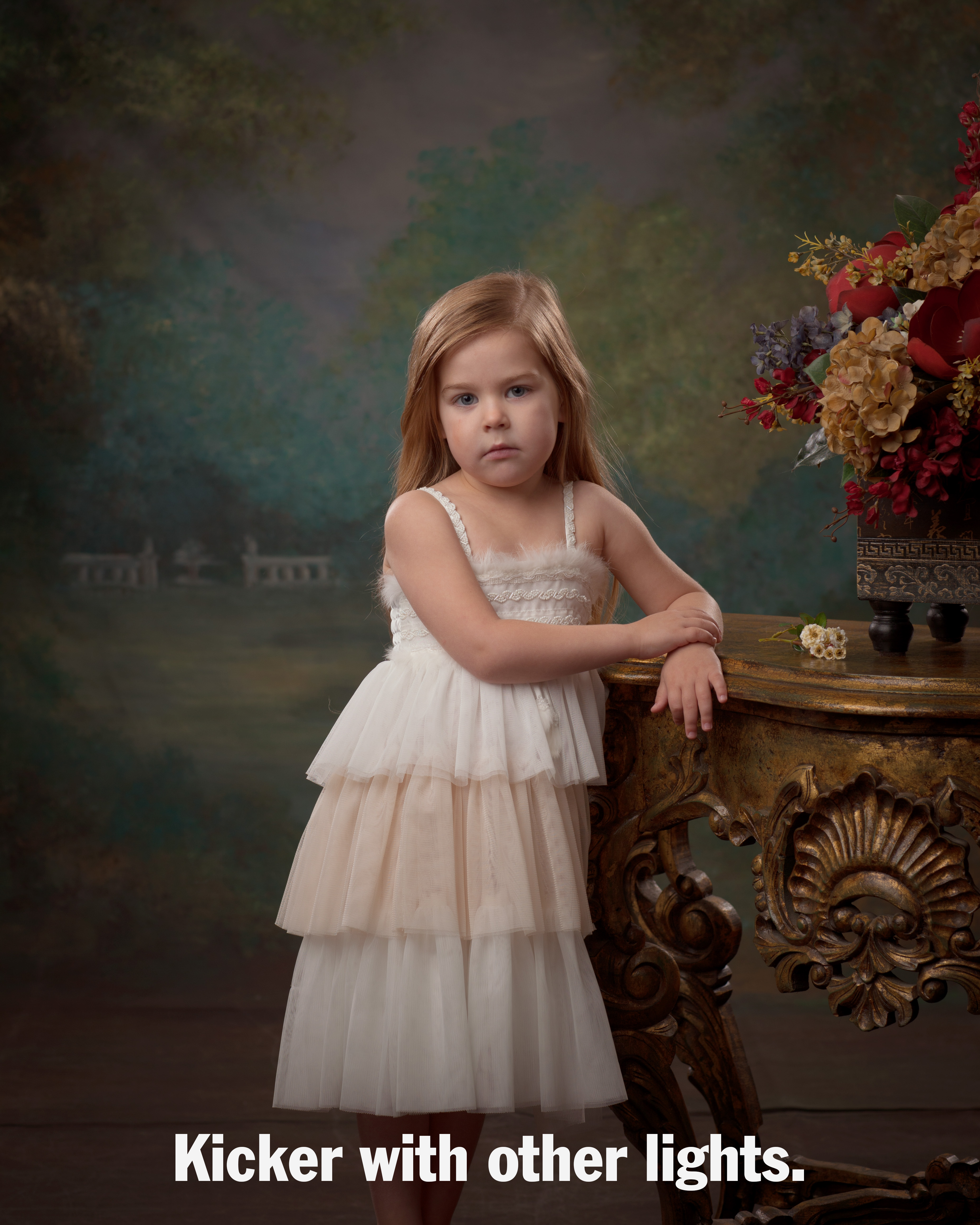
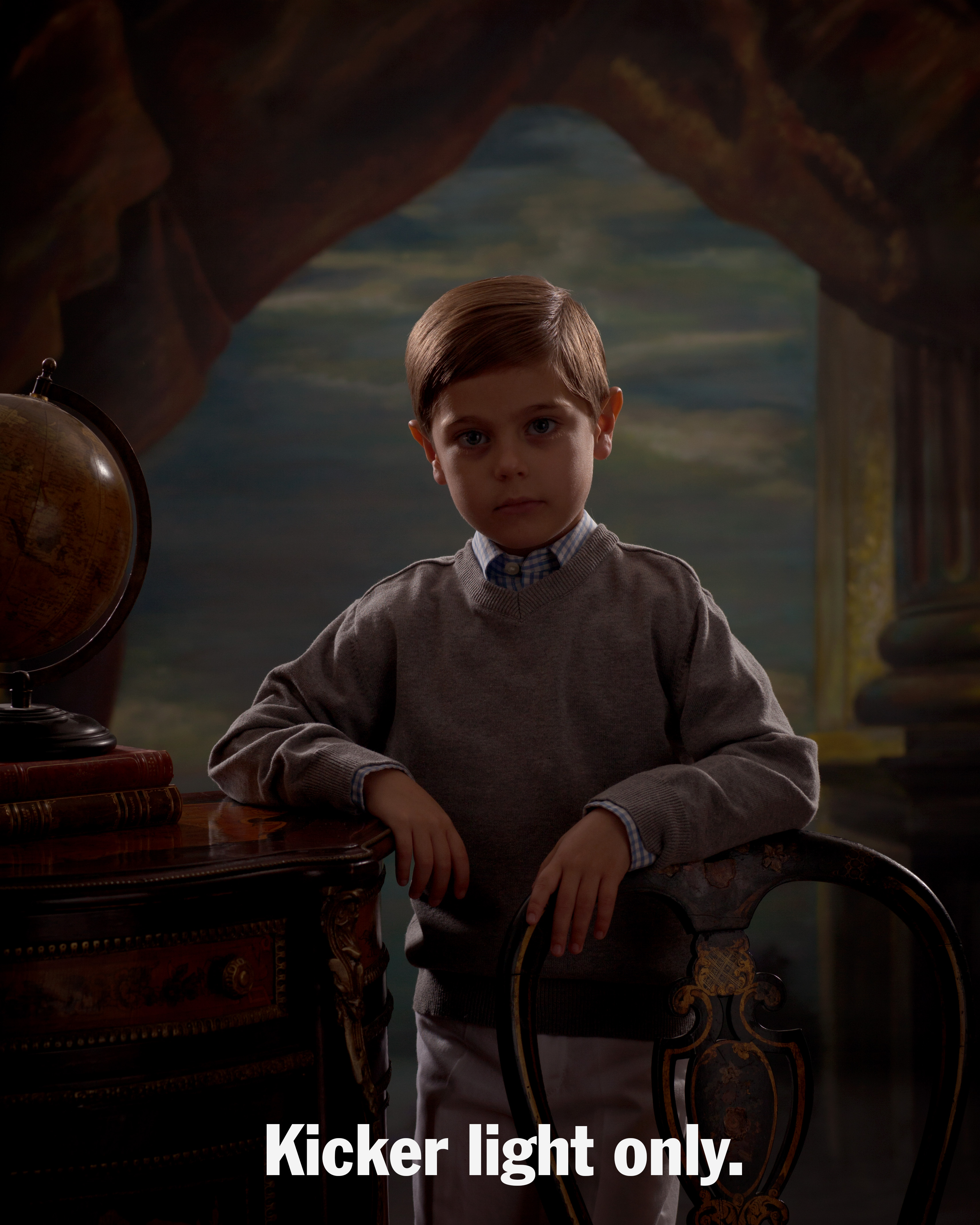
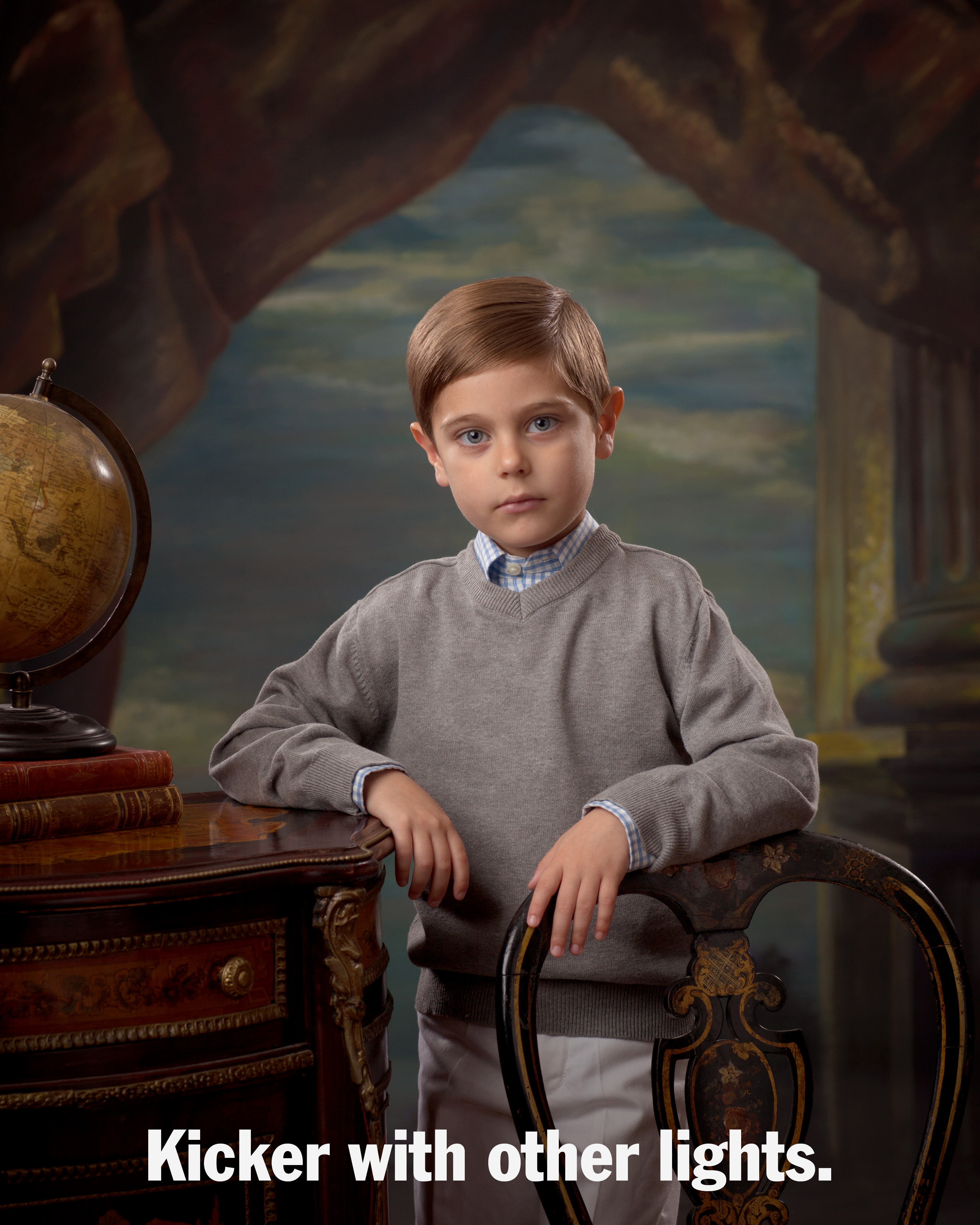
When studying the portrait work of Yosuf Karsh and Arnold Newman, you will notice ample use of Kicker lights. In many instances, these are used from both sides of the subject to create a dramatic effect.
There is a portrait by Karsh of Fidel Castro in which there is no apparent use of a Key light in the traditional way. Two Kickers actually do the job of the Key light… a very dramatic image indeed!
A simple way to set up the intensity of your lights for most situations is as follows: Set the Key light to the desired F-stop. Next set the Fill light so that you achieve the desired lighting ratio and then, if you are using a Kicker, set it to the same identical output as the fill light. For example: If the Fill light reads f/6.3 at the location of the subject, the Kicker should read f/6.3 as well.
Finally take an overall reading from your subject’s position pointing your meter towards the lens. Use this reading to set the exposure settings in your camera.
You probably have heard the term that a light is hard or soft, etc. The Accent light always looks as if it came from a hard light source. That may not necessarily be the case, as the light quality appears to be specular due to the angle of incidence, even when it originates from a soft source.
In conclusion, if you have not used an accent light before, try it using the instructions above and discover the difference lighting with an accent can bring to your portrait work.
Note: Gabriel operates Gabriel Portraiture in Ft. Worth, Texas. He is a frequent speaker at regional and state conventions and regional photography schools. He is well known for his classic style.
The Magic of Luxury Brands
Why making your customer the hero is killing your business
By: Bradford Rowley
 Recently, I have noticed a trend in many circles regarding the need for businesses to create a brand that weaves a story in all their communications that makes the client a hero of the story.
Recently, I have noticed a trend in many circles regarding the need for businesses to create a brand that weaves a story in all their communications that makes the client a hero of the story.
As the theory goes, the client becomes the hero of your brand. To do that, you start by figuring out the client’s pain points and so on, and then fulfill their needs and problems in a very cohesive story that neatly ties into what your brand is all about. That’s the current popular conventional wisdom, and it seems that everyone is trying to do this, including photography studios.
Many portrait studios make the client the hero by offering an array of choices and customizations, such as wall groupings, albums, folio boxes, and so on, to meet the client’s personal needs. To do this, pre-portrait consultations and planning sessions that include going to the client’s home before the portrait are often encouraged. Of course, the problem of following what everyone else does is that you get the results of everyone else, which in the photography industry isn’t always pretty. To truly succeed at the highest levels, however, you must turn this theory on its head; and instead of making your client the hero, you and your studio must be the hero . . .
But wait a minute . . . Shouldn’t the client always be the hero? Why should your business be the hero and not the client? Isn’t that why we are in business, to make a product that is all about the client? Answer—yes and no. Let me explain…
While I think that making the customer the hero and catering to their needs works great in most businesses, it does not work the same if you are creating a power luxury brand. This is where I go contrary and believe that your company, not the customer, needs to be the hero.
With the brand Chanel®, is the customer or the brand the hero? With the luxury car Ferrari®, is the customer or the brand the hero? I would argue that in both these cases, as well as in most high-end luxury brands, the brand is the hero. The customer becomes the hero by latching on to the heroism and pedigree of the brand.
When I bought my Mercedes-Benz® and my former Maserati®, the main story in the brochures was not about me, the customer, or how the car could fulfill my needs. Instead, the story was about the rich pedigree of the brand. It was full of vanity and history. The significance came from attaching oneself to the brand, not the brand fulfilling my needs, although it does fulfill a need . . .
A Timex® tells time, but a Rolex® is a status symbol of success. The first one will tell a story to fulfill my need for telling time; the latter is all about the brand and subtly invites me to fulfill my need for showing myself and others that I am successful by attaching myself to the brand if I am fortunate enough to do so. The first brand fulfills the need of the customer and makes the customer the hero. The second brand makes the brand the hero and lets me become the hero by association and ownership.
Three Ways to Make Your Studio the Hero
1. Become the celebrity photographer in your community. If you go to our home page, you will instantly see a long list of high-profile clients. Having high-end, well-known clients helps your brand have a hero status that makes others want to go to your studio by reason of association. A member of my Platinum Coaching Group has a long list of prominent clients, including Wolfgang Puck, Sir Elton John, Dr. Phil, Christina Aguilera, Fergie, Vanessa Williams, and so on, which makes others want to associate themselves with him, too.
But then how do you get people in high social circles as clients so you can develop a pedigree of famous clients? Although all my clients came to me, one strategy that you could use is to seek out the most prominent people in your community and offer a free portrait of significant size in exchange for a testimonial.
2. Show portraits in their most exquisite/expensive state. It’s almost impossible to attain hero status by trying to be all things to all people and showing less than your absolute best. Instead, take a stand and be the best at one thing. For us, that’s wall portraits. And we only showcase our portraits in the grandest way possible—life-size, exquisitely framed, and properly lit. When people come in, there is a certain awe factor. There is a feeling that we aren’t the average studio. This causes clients to listen to us and follow our advice much more. We become the hero in their eyes.
3. Let clients see you as the expert. Too many photographers today are desperately trying to please their clients by doing whatever their clients want instead of coming off as the expert. That’s why most photographers do pre-portrait consultations, and I don’t. Instead, we give a detailed dress code and instructions on how to best prepare for our client’s portrait. Ask yourself, if you went to a celebrity stylist that charged, say $900, for a haircut, would you give him all kinds of detailed instructions on how to do your hair? Or would you acquiesce that he is the expert, and you would let him do what he sees as his vision for you? For your company to obtain hero status, you must come off the same way.
One more example of the above principle is this: I recently bought an artist’s proof painting for our home from Wyland. An artist’s proof means that the artist will enhance the art piece with some unique painting so that each piece is different. Before making the purchase, I asked the salesperson exactly how unique of a painting would Wyland be doing on my piece. The salesperson simply responded, “That is entirely up to the artist and what he feels is right when he does it.” And I perfectly accepted that answer. Of course, he is the expert! He is the hero artist. Yet most studios do the opposite by turning over all control to the client by taking endless notes of artistry and so on. Yes, you want to please the client, but you must position yourself as the true expert whom your clients will completely trust because they see you as the hero in your field.
In summary, there are two schools of thought. Both eventually make the customer the hero, but in different ways.
Method 1 – Weave a story with your customer as the hero and their requirements being met by you as the central theme and a call to action based on solving their pain points.
Method 2 – Weave a story where the brand, not the customer, is the hero. The customer becomes the hero by attaching themselves to the exclusivity of the brand and entering their circle, where access seems almost restricted but somehow attainable. Instead of access through a call to action, it seems almost out of reach and, through the prestige of the brand, makes you want to reach for it, nonetheless, instead of the other way around, where the company tries to reach you to fulfill your needs.
When creating a luxury brand, it is the latter, not the former, that I feel will most give you success.
________________________________________________
Learn more about Bradford by visiting his website and by clicking on the following links:
Gold Group Free FB group is here…https://www.facebook.com/groups/MDPCoaching
“Choosing The Right Background Material”
By David and Julie Maheu
What background is right for you?
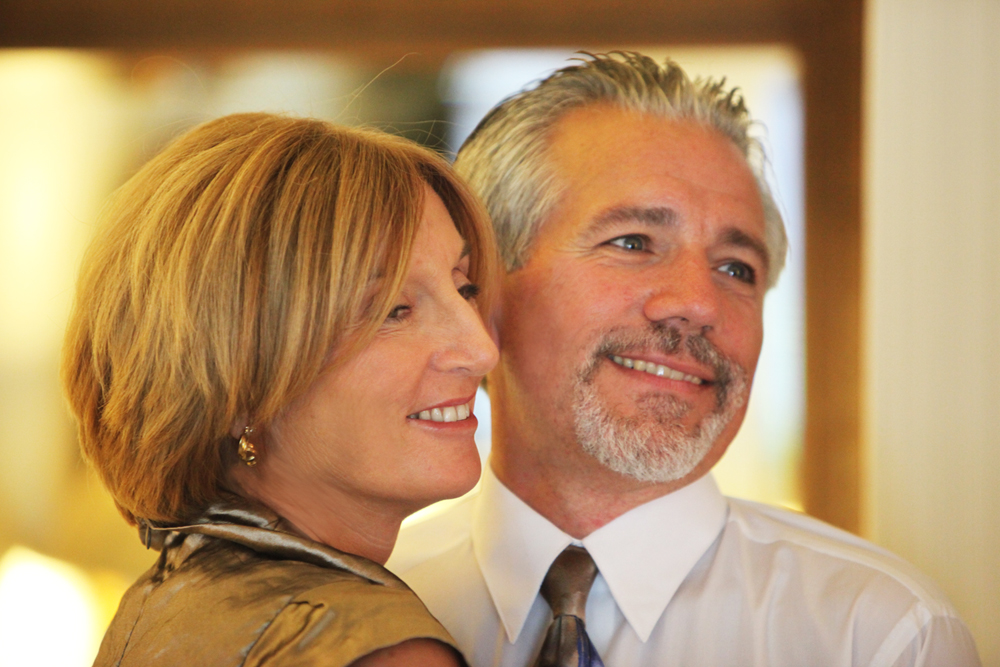 Whether you are just starting out in business or are an established professional, choosing the right type of background material has always been a question asked by our clients. We would like to discuss the pros and cons of all the background options to make your photography sessions most efficient.
Whether you are just starting out in business or are an established professional, choosing the right type of background material has always been a question asked by our clients. We would like to discuss the pros and cons of all the background options to make your photography sessions most efficient.
First, canvas backgrounds either roll on a motor tube or can be mounted on a board and put on light stands. You can also staple them permanently across a studio wall. Canvas stays smooth, is very durable and has the ultimate depth and color. However, a 10 foot wide rolls up 10ft long so larger sizes are not as portable.
But for studio photographers who do not want to steam out wrinkles or take time to clamp off the background to make it flat, canvas is a good choice. For on location head and shoulder and children’s portraits, we always suggest a small canvas 6x8 to 8x8, as it sets up very easily with one light stand with no wrinkles. Susan Michal's image below is on canvas.
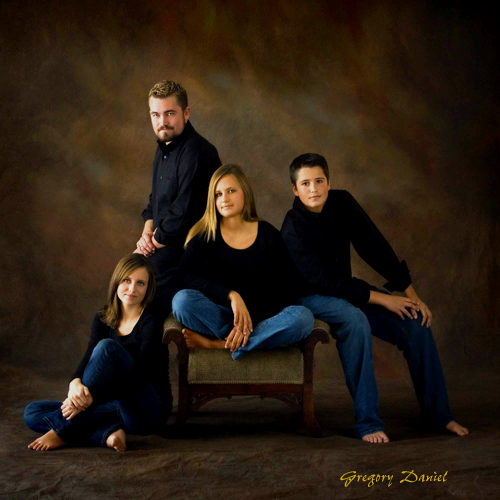
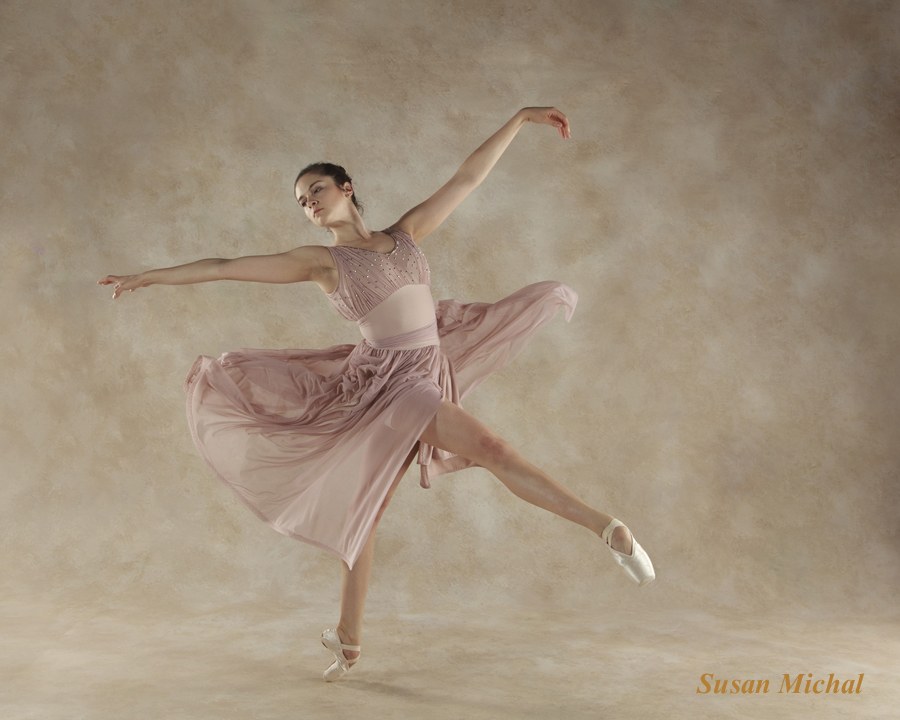
Hand painted muslin is the next choice. These have the same color and depth of canvas but to stay smooth and wrinkle-free you have to steam out any fold lines. To hang, you set up two stands with a cross bar, usually sold as background support kits, clamp 3 clamps across the bar and two on the sides onto the stands to pull taught. For in studio, use of a track system is perfect to keep them stored and wrinkle free. We suggest installing two poles just behind the track to clamp the sides taught or you can put hooks on the wall to clip to. The bottom of a large background can be looped into a holding strap to keep off the floor.
The advantage to muslin is you can use a large background on location easier than a canvas. A 20 to 30 foot wide muslin can be set up with 3 light stands and 2 crossbars over lapping in the middle for large groups, dance schools, etc. You can add a matching floor to create a studio look. Muslin can also be draped in creative shapes for a different look. Muslin is best stored and transported with a minimum amount of folding to decrease the lines to steam out. Hand painted muslins tend to be stiff at first so the more you use them they soften and will hang more easily. Greg Daniel's image is an example on muslin.
The last product is our artisan cloth better known as a computer printed backdrop . These are reproductions of our hand painted designs which have been a choice for photographers on the go who want a minimum of wrinkles .
So why would everyone not want these? First the pros: they are wrinkle free, light weight, washable, and great prices, however they are limited in sizes no wider than 10 feet. The color varies slightly from hand painted and the detail is softer. The bottoms may not stay put as easy on high volume shoots but can be taped down. They have to be hung like a muslin with cross bar or a track system. That being said, we have many customers who use all three products for their different situations, so you have to determine what is the most important factor for your photography.
In conclusion, these are the mechanics of choosing your background type but the most important decision will be the design you choose. This determines your style and quality of your images. We will discuss that part at a later date in this newsletter. So, stay tuned.
David and Julie Maheu have been the leader in painting backgrounds for 38 years. See their designs and the top photographer’s images at www.backgroundsbymaheu.com Feel free to call if you have any questions 1-800-237-1883. Email: This email address is being protected from spambots. You need JavaScript enabled to view it.
Thanks to Susan Michal and Gregory Daniel for sharing their images.
Marketing Can be Fun...Honestly!
By: Luci Dumas
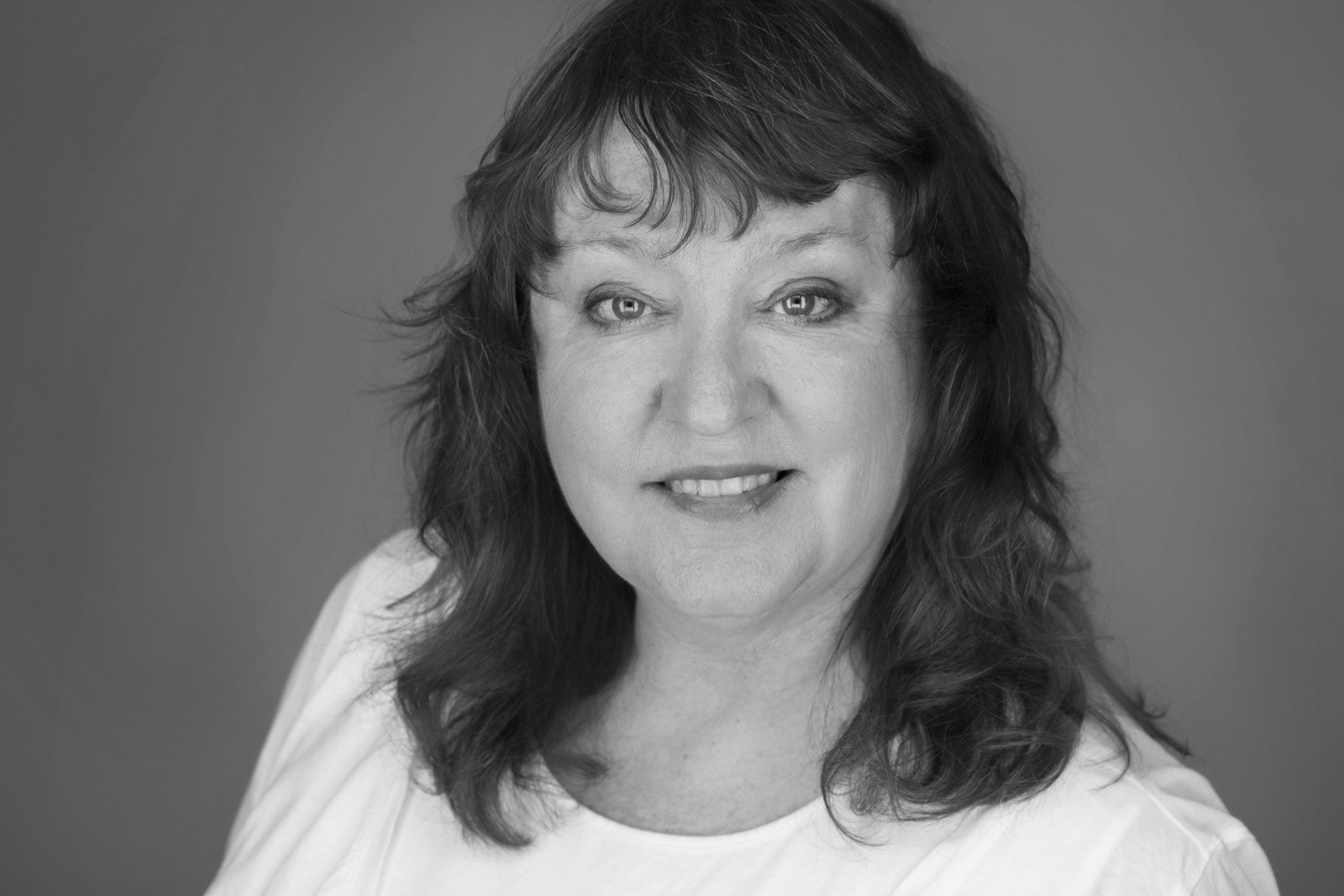
Does the idea of marketing usually seem like a daunting, un-fun activity? I have to admit it did to me. What I love most is to photograph kids and families, and get to know my clients. I find selling a creative and rewarding activity. I love coaching photographers on how to sell and market and create beautiful, sellable photographs.
But I was honestly kind of resistant to the thought of finding clients, and even the word marketing.
But here is the good news! I realized that I have always marketed in ways that I truly enjoy over the last 36 years of my full time photography career. While busy thinking marketing is a chore, I have found activities I look forward to that bring the most awesome clients my way.
My big “Aha Moment” was realizing that, I, my coaching clients and fellow photographers friends don’t have to do every possible idea in order to get work. We just need to find those activities that fit our personalities and interests, attract enough ideal clients, and do them well.
For example, I am a natural networker. I love to get to know people and refer them to services that I love. I am happy when people have the same great service or products from these businesses. And I enjoy supporting businesses that are awesome. For example, I find myself referring Mid-South Color Labs for printing, and The Levin Company for framing, over and over with no commission, not even the thought of it.
Because of this natural networking, I constantly gave referrals to my brides when I was a wedding photographer in San Diego for the first 10 of my 36 years in business. Even if I was booked on a wedding date, I shared my list of favorites with couples to help them have a great day and help my favorite vendors get weddings as well. I built friendships with cake bakers, DJ’s, caterers, and I even referred excellent photographers when I was booked. Of course, many of these vendors sent clients my way, which resulted in less need to “market” in ways that didn’t seem fun.
Another example of something I enjoy is trade shows. Because I am a chatty, friendly extrovert, setting up a booth and connecting with potential clients is enjoyable for me. I might do a drawing or sell gift certificates to “land” my ideal clients at a show or charity boutique. However, schmoozing with other vendors is a very important part of trade shows. I set up early and then walk around and chat with others who serve my ideal clients. I invite them to stop by my booth and sit when they need a break. I stay top of mind for vendors I already know.
What is natural for you? Do you love to write? Then blogging, writing articles for other blogs or magazines, sending newsletters, and such might be a fun way to market for you.
Do you have a heart to give? Charity auctions can be ideal when done properly by bringing donations to the charity and connecting you with wonderful new clients.
Do you love social media? Spending time in Facebook groups offering tips and making connections with moms or brides or pet lovers can be valuable.
What else do you love to do and how can you turn that into a “client-getting strategy”? Wouldn’t it be great to be as excited about the activities that pay off in new work as actually doing the work?
That being said, there are some things that may not be natural for you but get the results you are looking for. There are times when we have to “just do it”…or find someone that will. You may need to pay someone to help with these activities and it is totally worth it.
For instance, one of the most overlooked ways to get bookings is to create a lifetime relationship with your best clients. Keep a robust and up to date contact list and send communications regularly as well as making the occasional phone call or even take them to lunch or coffee. Send “snail mail” postcards for each season without it looking like advertising. A monthly or bi-monthly newsletter that is simple and readable will keep you top of mind for new and potential clients. For most people, an assistant to help with this ongoing strategy is worth the investment.
The moral of the story is this… we have created our business because we are passionate about photography, about children or animals or the love couples share. And because we want to have the income and lifestyle we dream about. I believe that every part of our businesses can have enjoyable aspects and that even marketing can be what gets us out of bed in the morning with a smile.
By the way, if you have not downloaded my eBook, 10 Big Ideas for Marketing in The Real World yet, you can sign up at www.insighttrainingforphotographers.com
Feel free to reach out for support, coaching, or to give feedback any time. I would love for you to join the conversation in my private group https://www.facebook.com/groups/InsightTrainingForPhotographers
Luci Dumas Fine Photography and
Insight Training for Photographers
619-233-9390
www.lucidumas.com
________________________________________________
